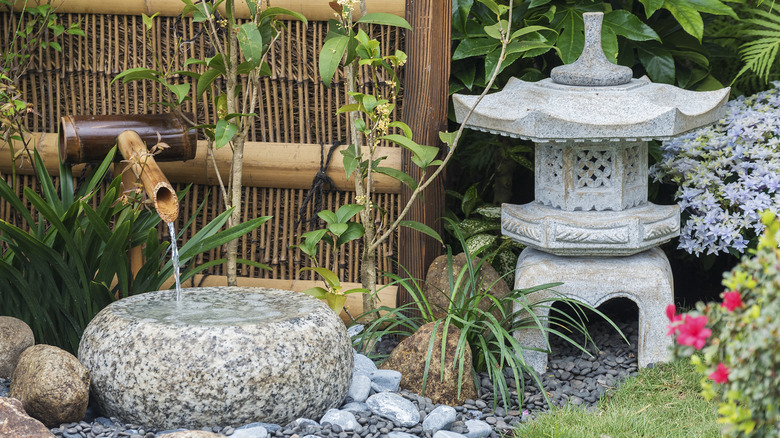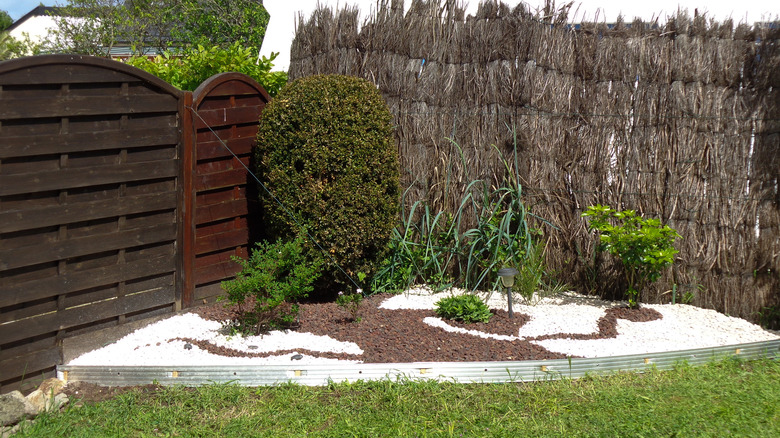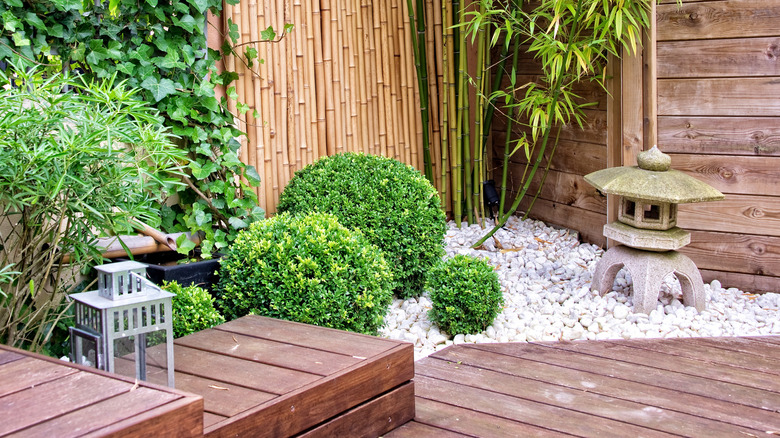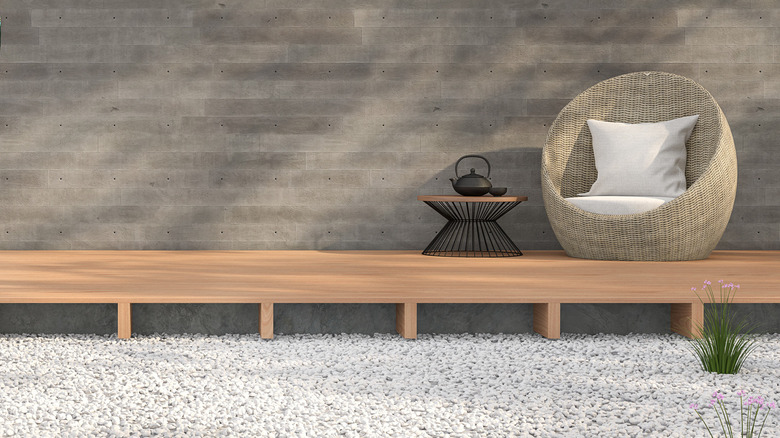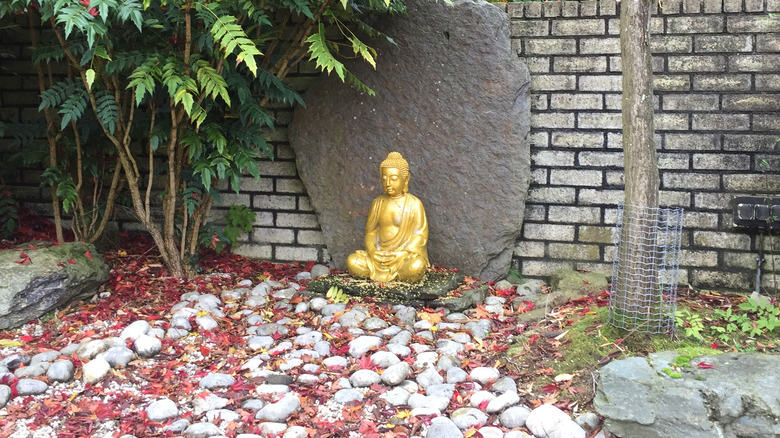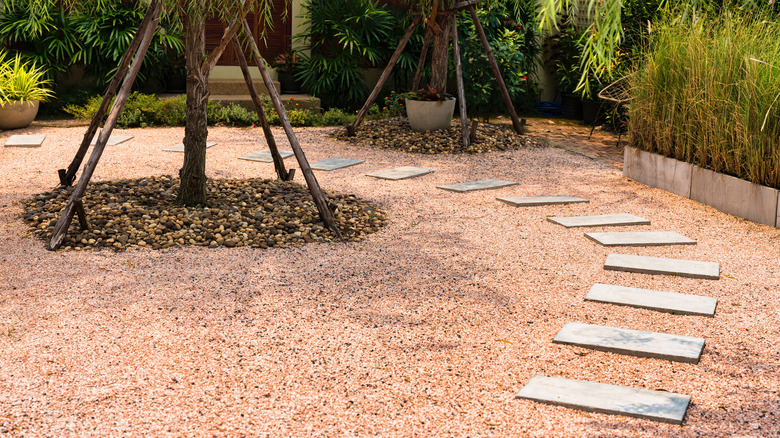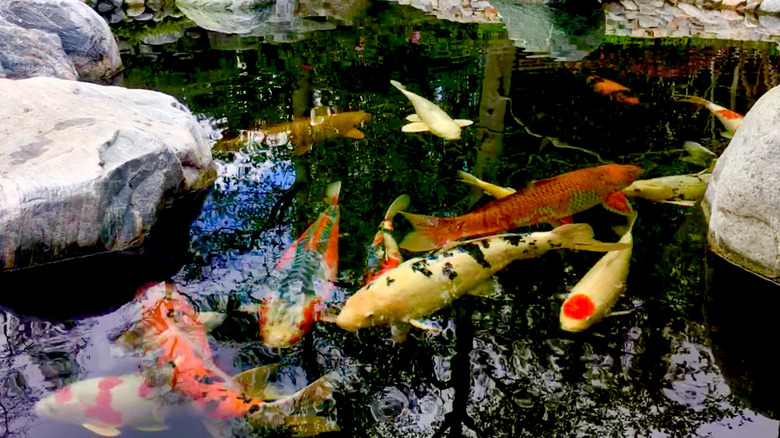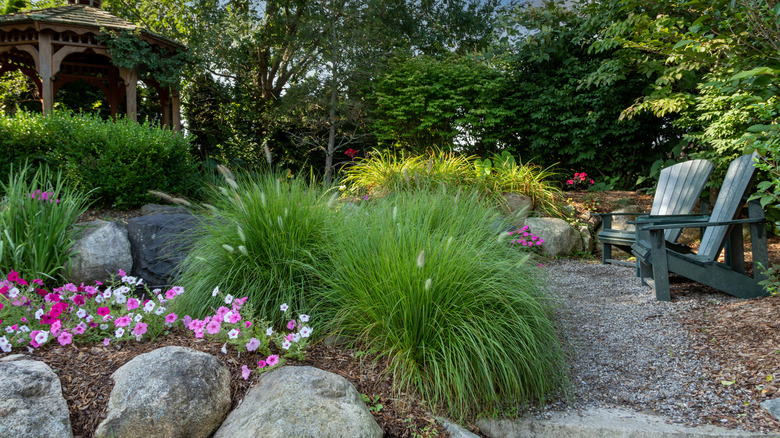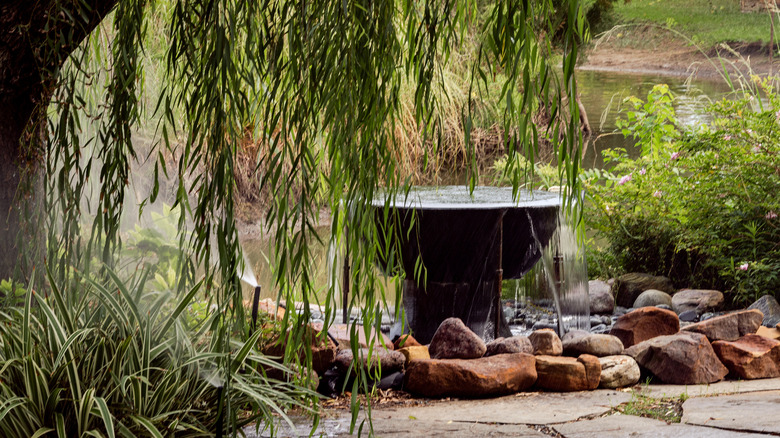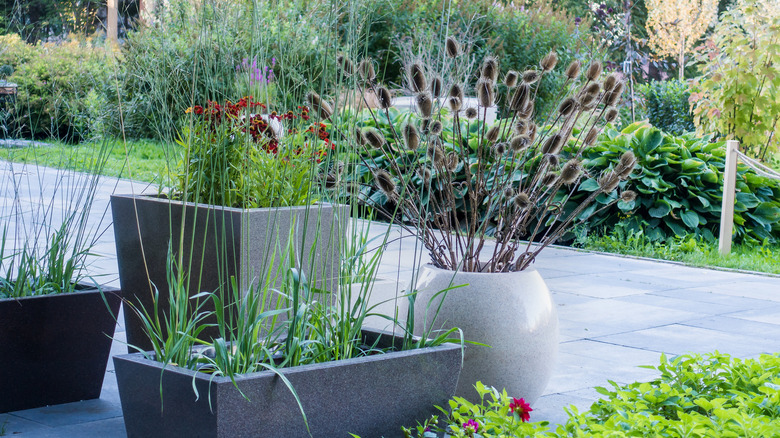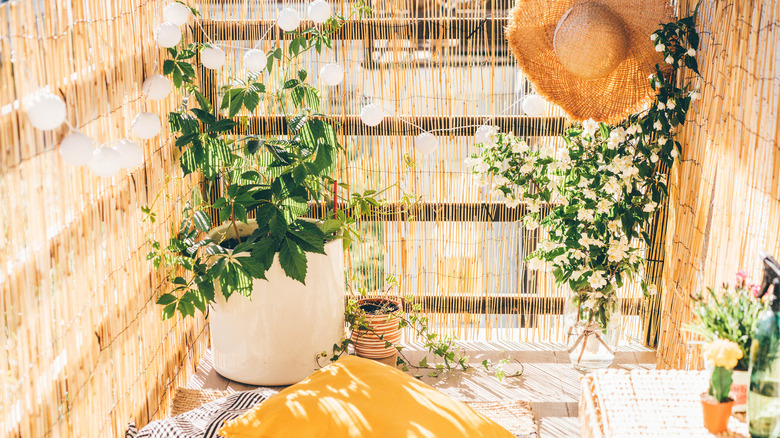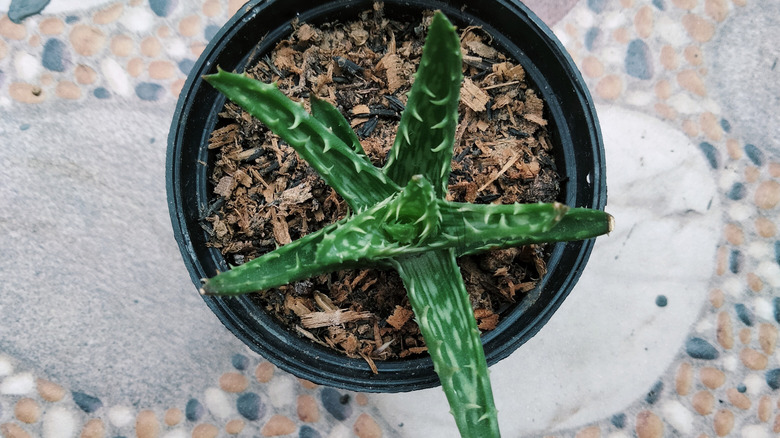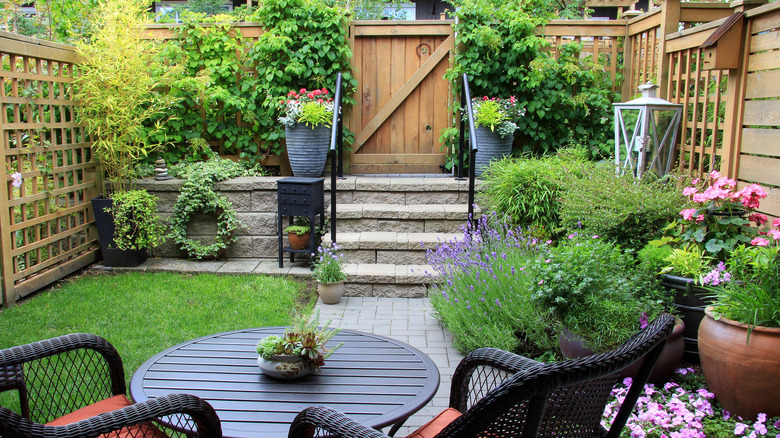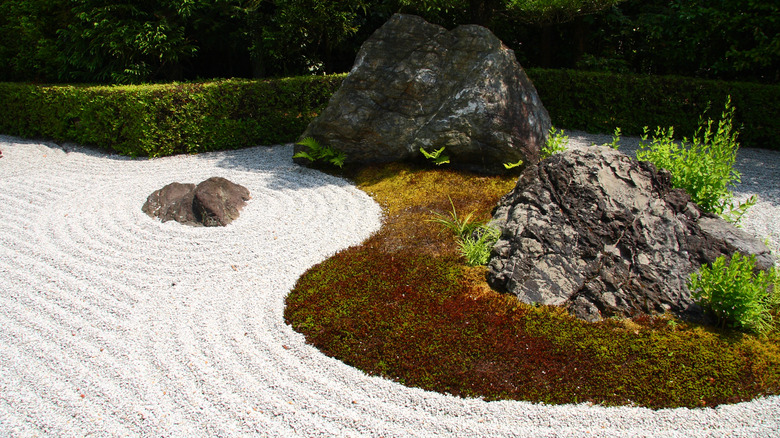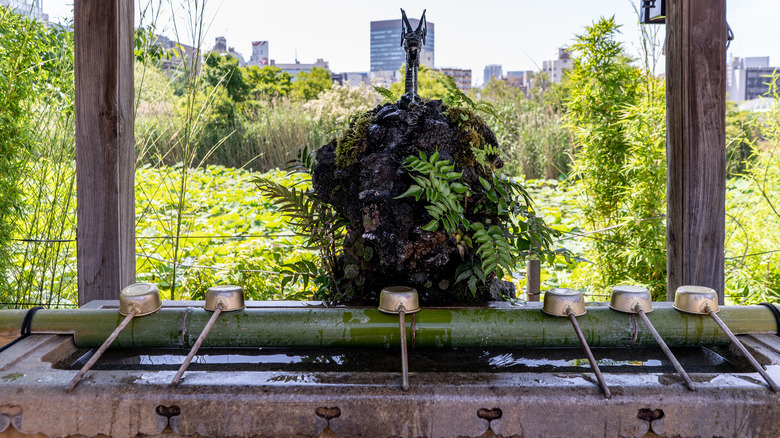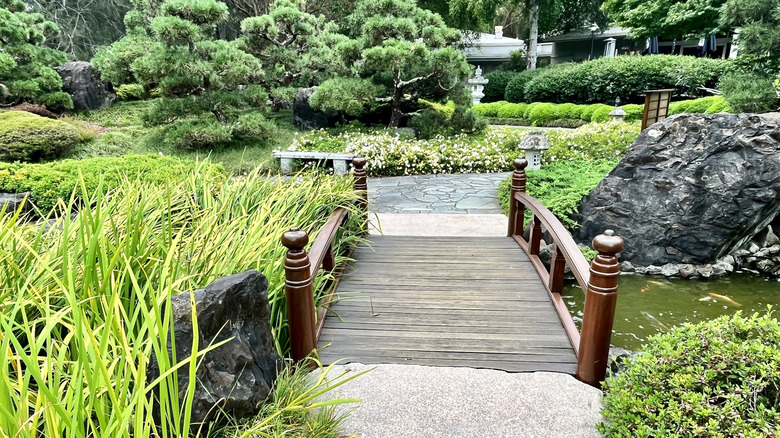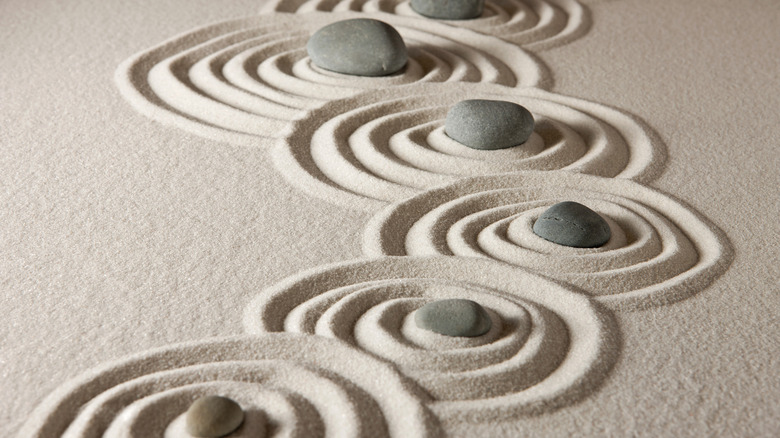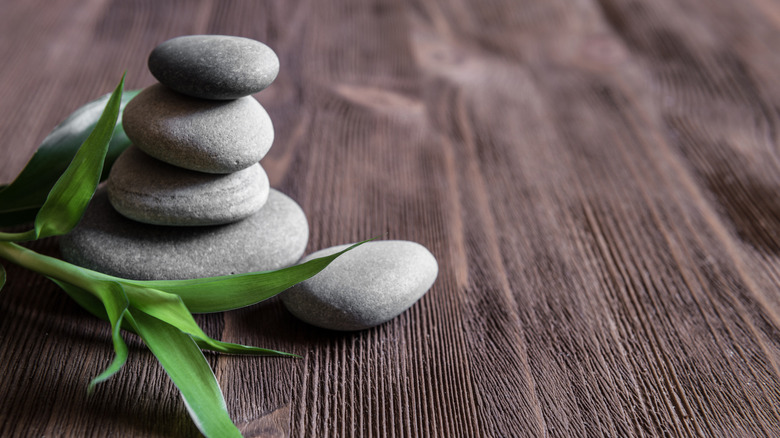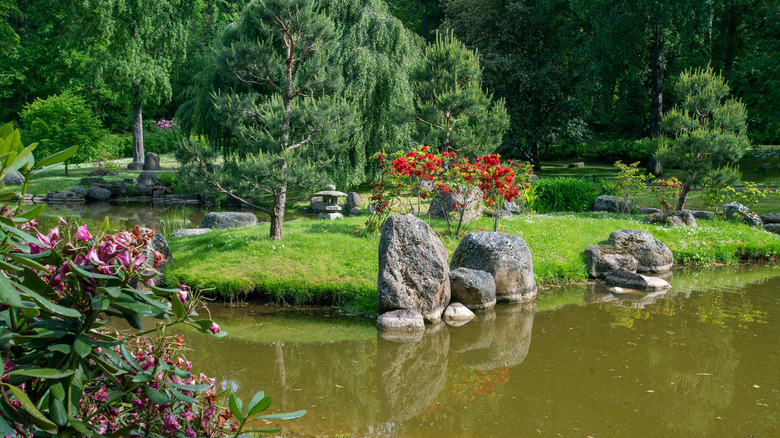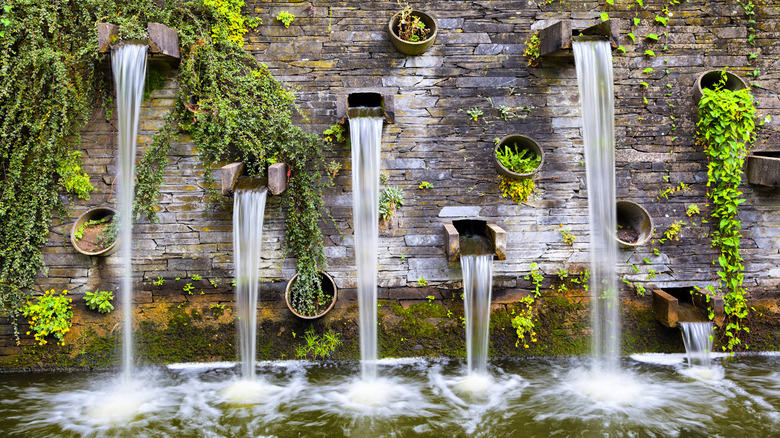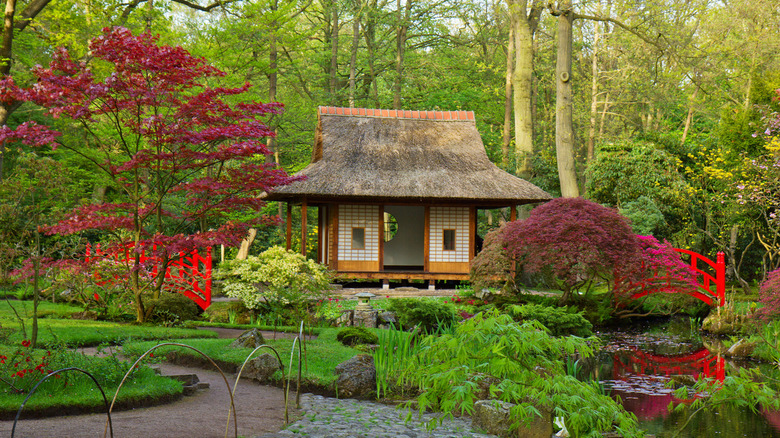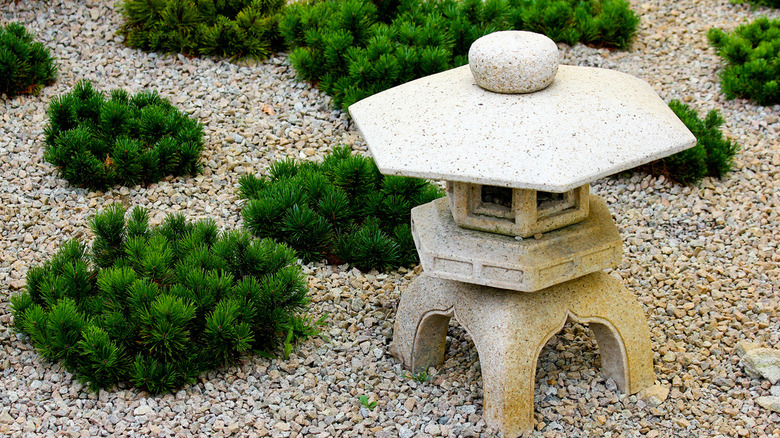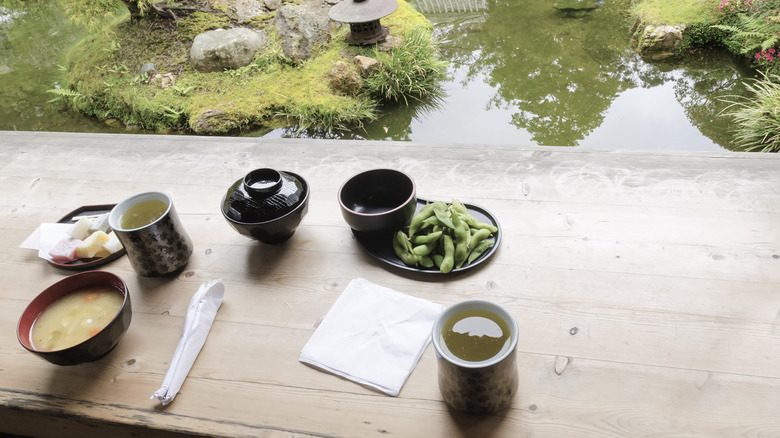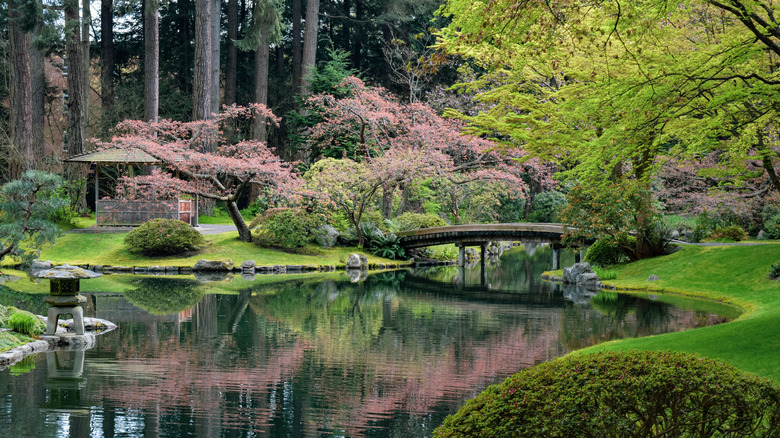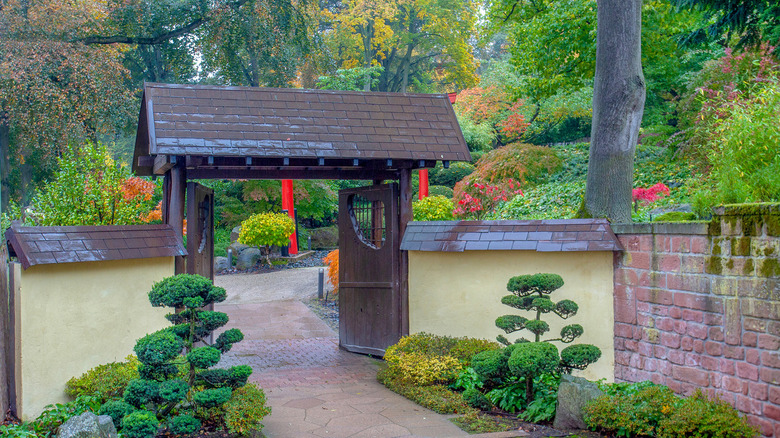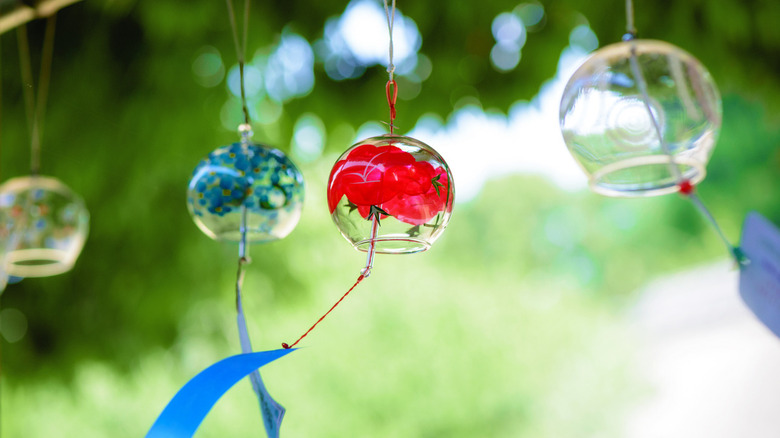Get Inspired By These Tranquil Zen Gardens For Your Yard
Minimalist by design with an emphasis on the bare essentials of nature, Zen gardens are prized for their calming and de-stressing effects. By stripping away worldly distractions and focusing on sophisticated simplicity, these spaces offer beauty and low maintenance in any area. Your design can be personalized by adding just a few typical elements like lanterns, greenery, sand, rocks, and water features.
The Home Depot suggests placing the garden where it can also be enjoyed as a view from inside your home. Once you've chosen the area, select a focal point, such as a small sculpture or statue, to begin your design. A traditional zen garden is primarily dry and consists mainly of rocks, sand, and gravel with some simple greenery like evergreen shrubbery and moss. Modern styles include fountains, ponds, flowering plants, and customized ornamentation and lighting. Whether you seek to change your entire backyard landscape or craft just a portion of it, you can easily find a little zen inspiration for your new Japanese-style garden.
1. Create a small zen space
One of the best things about a zen garden is that it can be any size. If your yard is small or you only want a portion of it to be designated for your particular zen area, that's perfectly doable.
2. Lanterns add interesting ornamentation
Whether you like the look of a metal lantern or a stone one, these decorative fixtures, called tenkeibutsu, are a perfect addition to a zen garden and are a great way to personalize yours. Lanterns are symbols of enlightenment and are multi-functional as they can add lighting and represent the elements of stone or metal.
3. Personalize with seating
Seating is an essential aspect of a zen garden. A bench is a traditional choice, but a stylish chair can also offer a place of rest where one can stop to meditate or contemplate. Keep it simple to align with the principle of minimalism.
4. Bring focus with a statue
Statues add interest and a focal point to your garden. Although Buddha statues are popular, you might choose an animal or a large stone lantern. The figure should aid in meditation, improve the garden's energy, and represent an element or principle such as strength or serenity.
5. Make a path with stepping stones
Stepping stones bring more to your garden than a pathway; they also incorporate the stone or rock (ishi) element, which symbolizes strength and fortitude. The path represents life's journey and encourages mindfulness, as careful stepping is necessary. Natural materials other than stone can also be used.
6. Add peace and beauty with a koi pond
If you have the space and the budget, a koi pond makes a beautiful addition to your garden. A zen garden is traditionally a dry space containing rocks and greenery but not water (mizu). However, water features are a popular way to bring positive and peaceful chi to Japanese-style gardens.
7. Design a viewing area
A primary function of a zen garden is to create a serene place where one can go in search of enlightenment. As mentioned earlier, a seating area is a standard feature, the seating style is optional, and the view should encourage a peaceful state of mind and meditation.
8. Embrace peace with a simple fountain
In zen gardening, the design must represent what exists in nature, and water (mizu) and its flow symbolize the passage of time. In traditional zen gardens, sand and small pebbles create areas that look like water. And many Japanese gardens include actual water features such as fountains, waterfalls, and ponds.
9. Increase chi with ornamental grasses
Plants (shokubutsu) are kept to a minimum in traditional zen gardens. Elegant and simple, ornamental grasses are a popular choice that requires no or low maintenance. These plants are hardy in colder temperatures, thrive in shady areas, are drought tolerant, and come in a variety of styles and colors that will easily complement your design.
10. Make use of versatile bamboo
Bamboo is so versatile that it can be used as a live plant (check to make sure you aren't planting an invasive species), or the dried shoots can be implemented as screening, fencing, borders, and tubing in water features.
11. Accentuate with potted plants
Potted plants are versatile in zen garden design. Plants in a container offer a neat way to add greenery and interest to small areas. Choose a simple color palette to preserve the calming intention of the garden. Some great plants include succulents, ferns, small ornamental trees, lilies, and azaleas.
12. Create spatial division with fencing
Fences, walls, and borders add visual interest while creating privacy and defining a space. Wood is popular, but garden designers use bamboo, hedges, brick, or stone to make these divisions.
13. Rake gravel to symbolize waves
Since zen gardens are traditionally dry, rocks and sand are often used to represent the element of water. Raking it to create wave-like patterns increases the symbolism. Popular colors of gravel include white, gray, and black. Placing larger rocks in the middle of the raked area often symbolizes islands.
14. Make room for hygiene
Washing your hands in a zen garden is not only a practice of good hygiene but also creates emotions of harmony and relaxation. This can be a simple basin of fresh water with dipping pots that are used to pour water over hands or as complex as a fountain with a continuous flow.
15. Bridges add beauty and symbolism
In zen gardening, bridges suggest transcendence; it represents the journey between the earthly world and those planes that exist beyond. If building a bridge is impossible within your space or budget, creating a miniature replica in the yard will suffice.
16. Design a pool of white sand for purity
Areas of combed sand, gravel, or pebbles are traditional components of a zen garden. Sand, in particular, is preferred because it's malleable, and white sand tends to represent purity. The entire body of sand can be a meditation tool interpreted as open space or water.
17. Stack rocks to create order and balance
There are many reasons people stack rocks in their gardens. Some find it the art of layering them satisfying; for others, it serves as a reminder of centeredness or making order from worldly chaos. There's also a belief that the stacked formations remind the meditator to remain focused and be one with nature.
18. Bring faux mountains to your zen garden
Large boulders (ishi) are used in zen gardens to symbolize mountains, which indicates strength and power. Sometimes, if upright, they represent trees. When situated by an entrance, these monoliths serve as a welcome to visitors.
19. Evoke strength and purity with a waterfall
Water is celebrated in zen gardening as being life-giving and purifying. A waterfall is a powerful representation of continuity, strength, and renewal. The splashing sound created by these features can be a therapeutic and relaxing aid in mediation.
20. Build a meditation hut or pagoda
Pagodas are common structures used for meditation and worship. A typical pagoda usually has an odd number of tiers that sometimes represent the five natural Earth elements. Any structure that you find suitable for your garden will do. The purpose is to create a space where you feel comfortable relaxing, meditating, or perhaps having tea.
21. Plant small shrubs purposefully
Nothing about a zen garden is random, including the selection of plants. Simple evergreens and small shrubs make great additions to the garden because they keep things to scale, and their placement can represent otherworldly elements. They add visual appeal without creating clutter.
22. Bring your tea to the garden
Intentionally making time in your busy schedule for tea is an ideal way to create a ritual of peace and calm. Designing a special place in the garden for the daily tea will help connect to nature and allow for mindfulness.
23. Apply visual appeal with cherry blossoms
Cherry blossom trees are a crucial part of Japanese culture, so it makes sense that they would be expected in zen gardens. These trees have a short albeit gorgeous bloom time and have come to symbolize both life, death, and beauty.
24. Welcome an enlightened journey with a gate
A gate is a welcoming gesture in a zen garden representing a passage from one desired state of enlightenment to another. Depending on your beliefs, it can also separate the regular world from the sacred one. Gates can have doors or be perpetually open without them attached; the choice is yours!
25. Predict fortune with wind chimes
Wind chimes are said to have fortune-telling properties. Hang them from your trees and listen to the sounds they make as the wind passes by to determine if good or back luck is heading your way. Over time, they are placed on porches to ward off bad energy.
